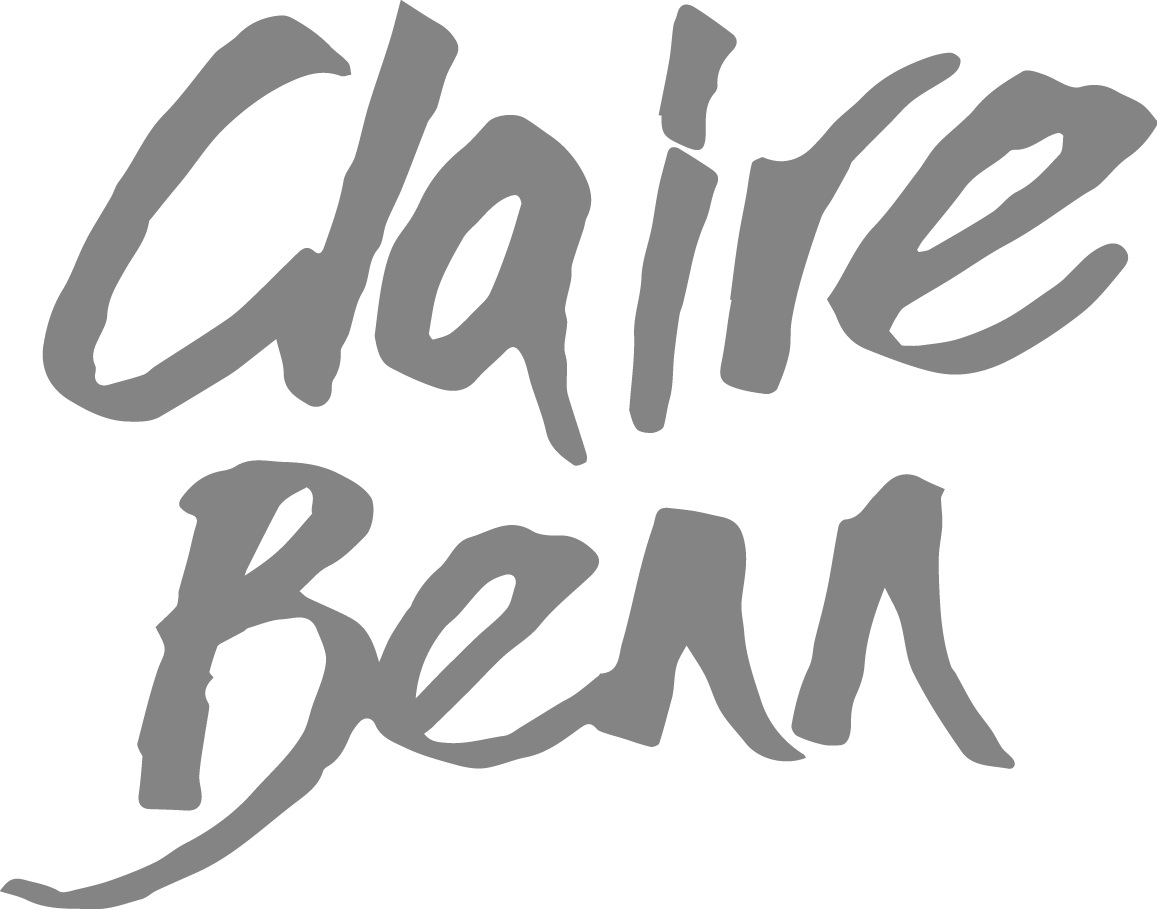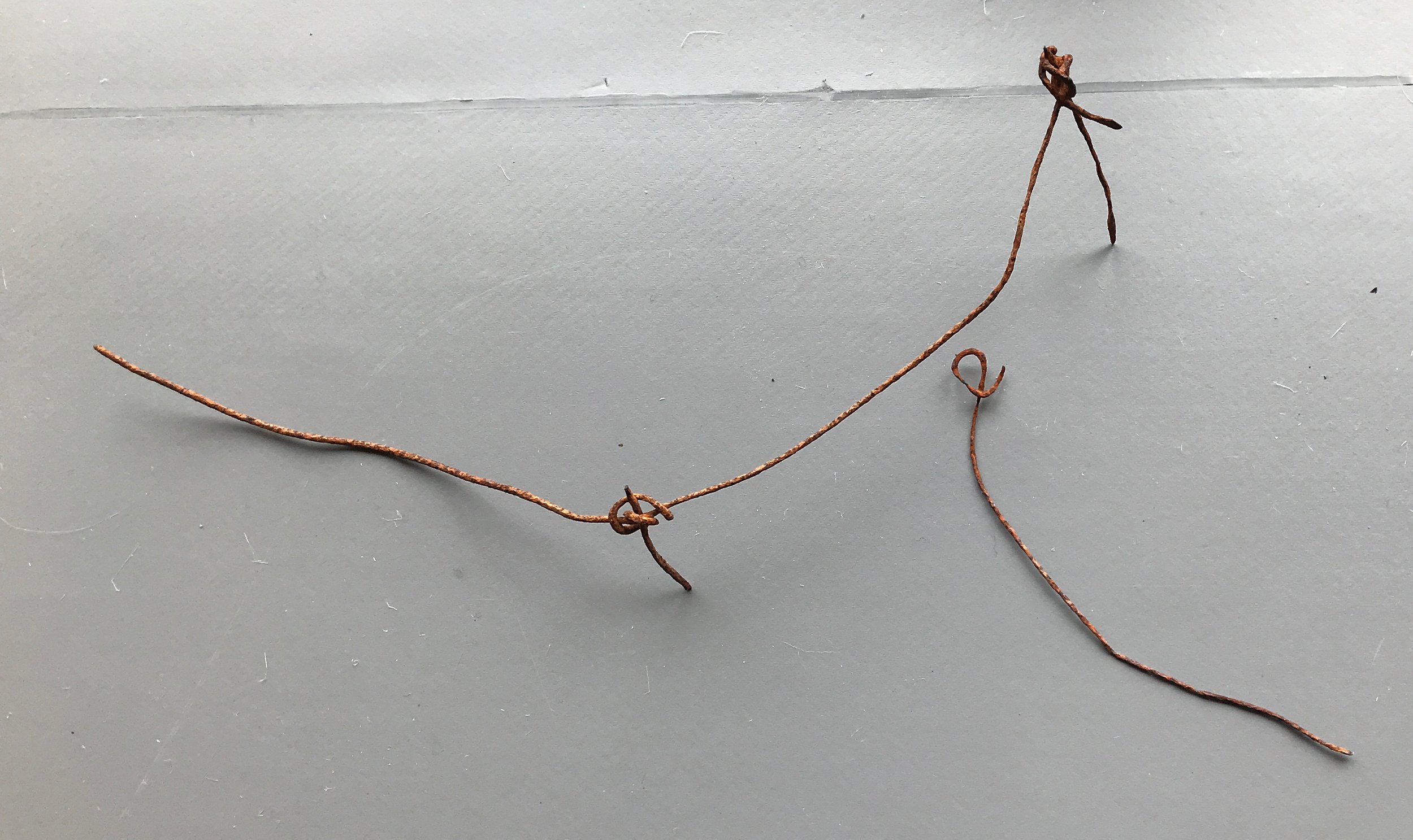Engaging with Ancient Ground - a dialogue with my work
While engaging with participants on the ‘Out of This Earth’ online workshop (www.fibreartstaketwo.com) a student (Marielle) commented “it's about elevating the whole thing to more than embellishing a print...”. I agreed with her and it caused me to start reflecting on how I move my own work forward; be that with a piece that came from a simple exploration of the media and materials, or an intentional piece that has an inspiration or source behind it. As a result, I thought I’d share how it often works for me.
When I work with intention, the idea, inspiration, source – call it what you will – comes first. I have a dialogue with myself, do free word associations, make lists of words about line, texture, shape, colour etc. that describe what I’m trying to get at. I’m seeking to create something that helps me manifest the idea and build my content. Once I’ve made a start, that dialogue is ongoing.
However, most of the participants on ‘Out of This Earth’ were responding to pieces that began their lives as explorations rather than intentional work, and both starting points are equally valid. When I’m reviewing exploratory pieces that had no purpose other than discovery, something within the result has to arrest me, captivate me or speak to me if I’m to pursue it. It has to give me the first line of a story. It may be a loud SHOUT! It may be a muttering or it may be a whisper. At that point I begin to focus my attention and listen to what the piece is trying to say. I may not touch it in any way but simply allow it to speak, have a conversation with it. Let me give you an example of how an internal dialogue can unfold.
In 2022 I’d been working on a concrete slab outside my studio and created a fairly large piece (2m x 1.5m) that didn’t work. In January 2023 I re-examined it and saw tthat if I cut it into three, the smaller pieces had potential. Once split up, two pieces began to whisper to me so I post-sized them. They hung for 4 weeks on my lines and then hung for another four on my design wall – fermenting - while I got on with other things. During that time one of the pieces (we’ll keep it simple and call it P1) started a conversation:
P1: “I am ancient ground”.
CB; ancient ground… pre-Roman, Iron Age hill forts, settlements, stockades, roundhouses, aerial view, contours, hillocks in the land. I’ll let that ferment for a while.
Ideas surfaced: appliqué a settlement area using some off-cut yellow’ish cloth, stitch the settlement, do something with the contour shapes. In April I began to audition those ideas and P1 spoke;
P1: “I am ancient ground. How about walking me”.
CB: okay, I see what you’re getting at, let’s see if I can find a pathway around the contours, the hills.
I used thread to audition paths, hunting tracks, animal tracks. I let these ferment for about 3 days.
P1: “I am ancient ground. See my contours, hillocks, mounds. Are they natural or man-made – burial mounds maybe? Perhaps I am an archaeologist’s wet dream”.
CB: okay, I can get with that story because I’ve had similar thoughts about ‘findings’ or grave goods for other pieces, so burial mounds are worth thinking about. with my work
P1: “Yes, I think that’s worth exploring”.
CB: Okay, how about a grid as if the land were being mapped out for a dig…
I lay down the horizontals of a grid and in doing so, the Piece speaks again:
P1: “I’m not sure about this dig site, it is a contrast to my spare-looking ancient ground but I can’t make the connection between it and me… can we divert for a minute and think about furrows, the plough…”
CB: you’re changing the story but yes, let’s see what you have to say for yourself about plough lines before I proceed with the verticals of a grid – you may prefer that story.
I knew that ancient plough lines can still be seen on the land – they’re called Ridge & Furrow - dating from about 800CE. Often most visible on hillsides due to people being forced upwards as flat, fertile land became scarce. The Black Death then decimated the population but as a result, those who survived abandoned the high ground to return to more productive land, leaving the ridges and furrows to mellow into the earth.
Having pondered ridge and furrow I remained unconvinced and P1 spoke:
P1: “Okay, I accept hat 800CE isn’t ancient enough – we want pre-Roman - Iron or Bronze Age, Boudica time.”
CB: I agree, let’s re-visit that.
I returned to earlier conversations and stitched in contour lines in one place and a blackthorn defence ring in another – it’s said that dense blackthorn initially prevented the Romans from conquering the Druid’s Isle of Anglesey.
That didn’t work out… just as well the cat enforced a break from time to time…
I knew I needed to back off P1. I felt I was forcing things and couldn’t quite grasp what it wanted. I switched to P2 to audition what a settlement ring might look like, or the outline of a barrow.
P2: “No, I’m even sparser than P1, stop fussing with me”.
CB: you’re right, there’s something about the sparseness and fragility of the marks that I don’t want to interfere with too much.
While all this was going on I started to read ‘The Old Ways’, a book by Robert MacFarlane about the tracks, holloways and drove roads that form an ancient network all over the British Isles. That took me back to the conversation about walking, so I went back to P1 and tried stitching in routes but in a much finer thread to keep things delicate. But no response from P1 other than a raised eyebrow.
I backed off both Ancient Grounds and started work on taking some other pieces to completion, focusing on the earlier idea of grave goods or findings. I auditioned lots of things: spiky bits of blackthorn, very small pieces of wood or twig, a battered poultry needle that could represent a spear, bits of deep yellow and pale grey thread to suggest gold or silver.
I used silver leaf on my first piece which took things in the right direction but wasn’t quite enough – I wanted a real artefact… which led me to my jewellery box.
I dug out several pairs of silver earrings I hadn’t worn in years, took them to my studio and separated the component parts and auditioned them. One of the pieces looked good and I stitched it on. Perfect.
‘Argentum’, 35 x9 3cm
Exhibited at the Ruthin Craft Centre as part of the ‘Natural (Re)Sources exhibition
(Image: Dewi Tannat Lloyd)
Now I was getting somewhere with the grave goods idea but wanted the silver to look more worn, a bit battered. I had a go at bashing a few bits with a hammer but knew I didn’t have the skills to get what I wanted. I asked Sylvia Quinnel (the silversmith who shows with Gallery 57) to make me grave goods to stitch on to the work, drawing out the different shapes and sizes for her and discussing how best to distress them. While she got on with that James and I went off on a 3-week retreat to the far north-west of Scotland. I took P1 and P2 with me in case a different landscape would offer new conversations.
When I go to the far north-west of Scotland I always feel as if I’m on ancient ground – ground that somehow feels older than where I live in Surrey. And there’s a truth in that feeling as much of the area is formed of Gneiss rock – the oldest rock to be found in the British Isles.
I don’t know whether taking a break from P1 and P2 helped me to resolve things or whether it was simply being in a different environment. I figured out how I wanted to stitch P2 and on a walk one day, picked up some small rusted pieces of wire. I auditioned these which made me realise that P2 also needed grave goods. I emailed Sylvia to ask her to make me some small, bronze artefacts in addition to the silver pieces I’d commissioned.
Bronze artefacts inspired by a finding of old wire.
Sylvia hadn’t worked with bronze sheet for many, many years and it was much harder to distress than the silver, but she managed it and eight small pieces of bronze got stitched to the work. What’s nice about this is that making my artefacts gave Sylvia new ideas for her jewellery pieces.
And so it goes. Sometimes I go forwards, sometimes I double back, sometimes not much happens at all for a while. My pieces are alive to me, able to speak, encourage, agree, grumble, prod, cough politely when I’m not getting it right, suggest things. It’s a call and response, an ongoing dialogue where the content of the piece moves into visual communication – elevating an exploration into finished work.
‘Ancient Ground’, 51cm wide x 101cm tall, 2023
I think it’s worth sharing another story about how another piece came into being while we were in Scotland. I’d taken a battered old grain sack with me. It had some faded lines of murky blue warp thread so I prepared a canvas backing cloth using a mix of blue and black pigment. I didn’t have an inspiration or thought process until I arrived in Scotland and gazed at the landscape, fished in the streams and lochs and walked the shoreline. A flash of inspiration arrived, a sudden realisation of what I wanted this piece to be about; Scotland – for me a place of sacred ground:
• the colour of the jute spoke to me of the dead bracken.
• the holes in the jute – once placed over the blue backing cloth – spoke to me of the lochs.
• the blue lines of warp spoke to me of the rivers and the streams.
• I didn’t have the shore, so used blue thread to stitch it in.
I gave it a title as I worked; ‘The Land, the Lochs, the Rivers and the Shore’. If you’ve never visited Scotland you may not get the content behind the work but that doesn’t matter to me. But maybe, in your mind, you’ll be able to imagine it.
‘The Land, The Lochs, The Rivers and the Shore’, 85 x 72cm
This is how I build my pieces and move them towards becoming finished artwork. Bouncing back and forth between evaluating and auditioning and refining. It’s a constant dialogue between myself and the work. Maybe you think I’m crazy. Don’t knock it until you’ve tried it. Engage, have the dialogue, do the call and response and don’t worry if the piece changes its mind or offers different suggestions. Sure, it may be a slow process (although sometimes things do get resolved quickly) but taking your time will usually pay dividends. The work will tell you when it’s happy, you’ll know when it’s right.
CB
To see the complete “Unearthed’ set of works, visit www.clairebenn.com
And, many of the pieces are currently being exhibited as part of the ‘Unearthed’ exhibition at Gallery 57 (until 23rd December, www.gallery57.co.uk)
For more information about the online workshops available from Fibre Arts Take Two, visit www.fibreartstaketwo.com










